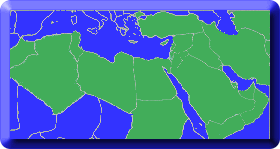
Topics in Middle Eastern and North African Economies
Document Type
Article
Publication Date
9-1-2019
Journal Title
Topics in Middle Eastern and North African Economies
Volume
21
Issue
2
Publisher
Middle East Economic Association and Loyola University Chicago
Abstract
In November 2016 Egypt went through a massive devaluation of its currency. This was followed by a jump in prices, particularly for traded goods including food, and particularly in Rural Lower, Rural Upper and Urban Lower regions. Using data from the Central Bank of Egypt and microdata from the 2008-2015 Household Income, Expenditure and Consumption Surveys, this study investigates the pass-through of exchange rate changes to prices of various commodities across all regions and, through households’ consumption and substitution patterns, the implications for households’ cost of living and welfare. Predictions of the one-month and sixmonth impacts of the November 2016 devaluation are made. Our results show that typically 4% of exchange rate changes are passed through to prices immediately, and cumulatively approximately 9% are passed through over the six months after devaluation. Accounting for households’ consumption patterns, we compute fixed-weight Laspeyres price indices and cost of living indices to compare the impact of the devaluation to a counterfactual scenario without it. We find that the cost of living of an average household rises by as much as 50% following the devaluation, and the household’s expenditure would have had to rise by twice as much after the devaluation to maintain its 2015 real expenditure level, compared to the counterfactual. These effects are higher still among households in the poorest income quintiles in all regions, according to all cost-of-living measures.
ISSN
2334-282X
Recommended Citation
Alazzawi, Shireen and Hlasny, Vladimir, "Disparities in the Cost of Living Changes after a Large-Scale Devaluation: The Case of Egypt 2016". Topics in Middle Eastern and North African Economies, electronic journal, 21, 2, Middle East Economic Association and Loyola University Chicago, 2019, http://www.luc.edu/orgs/meea/
Creative Commons License

This work is licensed under a Creative Commons Attribution-Noncommercial-No Derivative Works 3.0 License.
Copyright Statement
© 2019 The Authors



Comments
Presentation of the articles in the Topics in Middle Eastern and North African Economies was made possible by a limited license granted to Loyola University Chicago and Middle East Economics Association from the authors who have retained all copyrights in the articles.